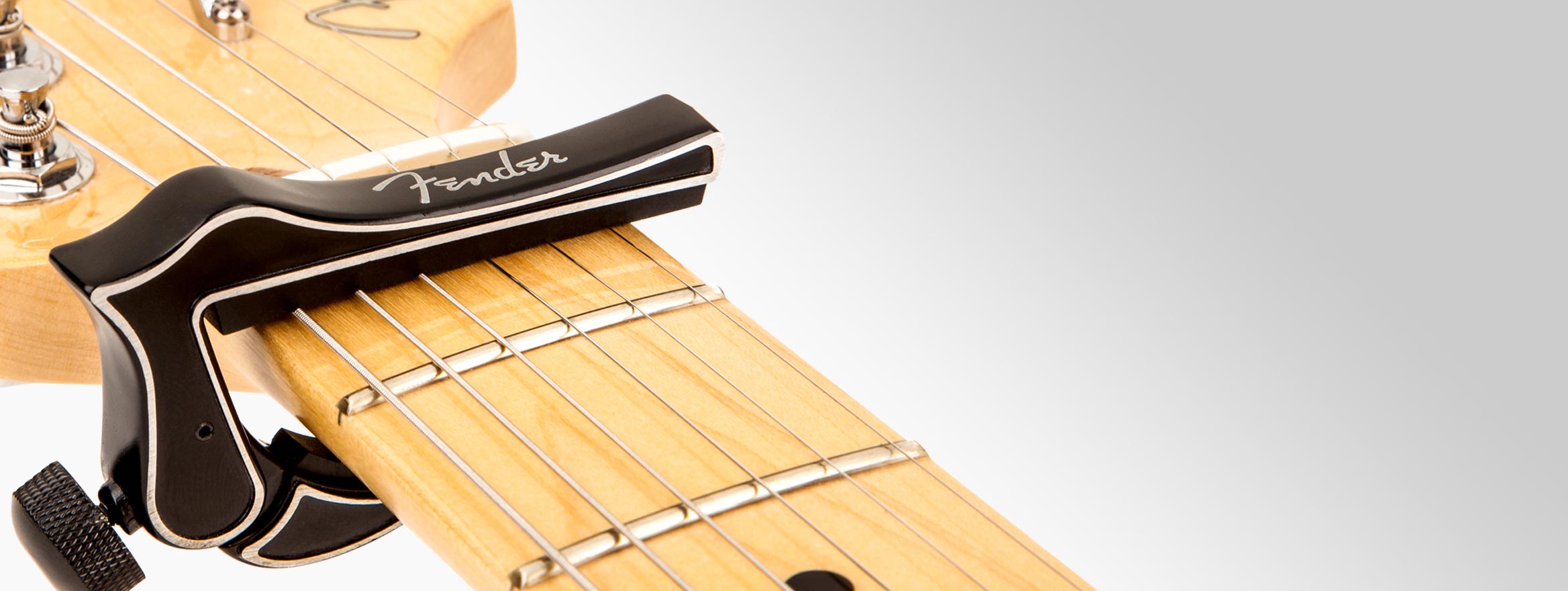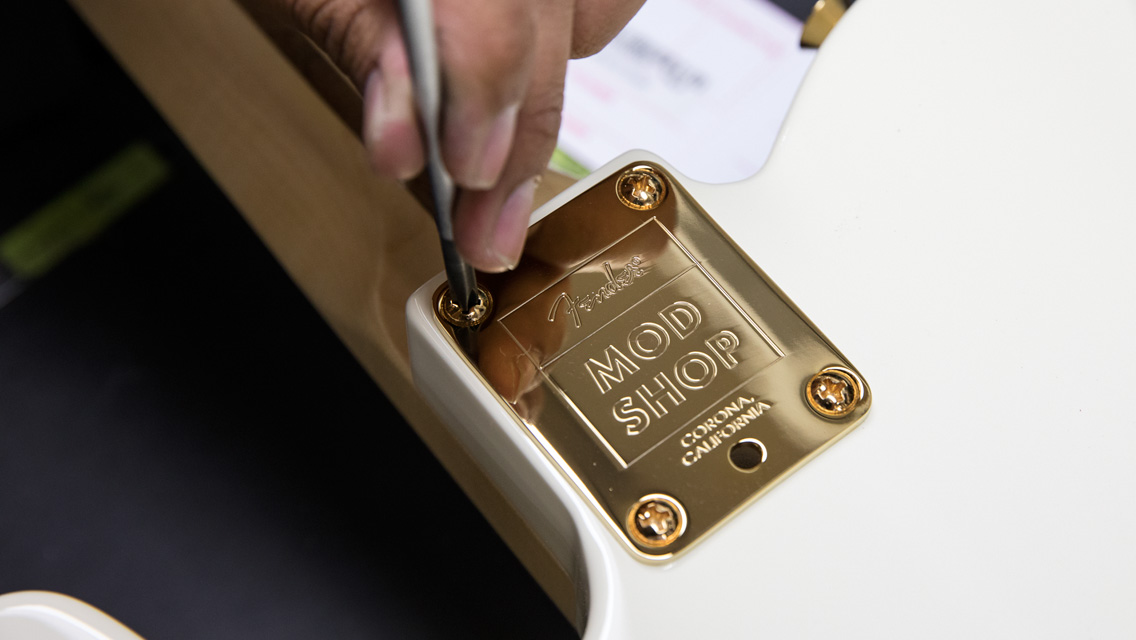
One of the more common acoustic and electric guitar accessories--along with tuners, string winders, humidifiers, etc.--is the capo.
Taking its name from the Italian word for "head," a capo is a small device that clamps onto the neck of a guitar and shortens the length of the strings, raising their pitch. A capo is usually fastened across all the strings of a guitar or other fretted stringed instrument, although less often they are used on only some strings rather than all of them.
The main advantage of using a capo is that it lets a guitarist play a song in different keys while still using first-position open-string chord forms, which have a more droning and fully resonant tone than, for example, many bar chords.
To understand what a capo does, you must first understand what the nut does. On the headstock end of a guitar, the termination of a string’s vibrating length (or scale length) is a thin strip of plastic, metal or bone called the nut. The nut straddles the joint where the fretboard meets the headstock, and the strings pass over it (often at an angle) as they leave the fretboard and find their anchoring points on the headstock.
The nut has grooves that, along with the bridge at the body end of the scale length, ensure the correct lateral placement of the strings along the length of the fretboard.
A capo functions as a sort of moveable nut, as it can be affixed to any fret below the neck joint and provide the same kind of vibration termination. Unlike the nut, however, capos don’t have string grooves, as their only purpose is to change pitch rather than maintain lateral string placement (a function still ensured by the nut and bridge even when a capo is in use). A capo thus works in addition to the nut, rather than instead of it.
An important distinction worth noting about capos is that they’re used to change the pitch of open strings without adjusting the tuning keys. This means that the pitch of fretted notes does not change; only the pitch of the open, unfretted strings. Consequently, not only the pitch but also the timbre of the strings is affected, imparting the tonality of instruments with shorter scales, such as mandolins.
Different styles of capos are affixed to a guitar neck just behind the fret wire by one of several different attachment methods. Most have a rubber-covered bar that actually holds down the strings, fastened to the neck with an elastic, nylon or other fabric strap; or by a spring, screw or cam-operated clamp.
A more recent innovation is the partial capo, which does not completely encircle the neck and which can be applied to only two, three, four or five strings rather than all six. This allows dozens of tonal variations without changing the tuning of the instrument.
Capo use is common in blues, folk, flamenco and traditional Irish guitar music; they’re used hardly at all in jazz and classical guitar playing. Many rock and pop players have used capos, including George Harrison, Keith Richards, Noel Gallagher, Bruce Springsteen, Steve Earle, Tom Petty, Richard Thompson, Johnny Marr, Paul Simon, Jimmy Page, John Mayer and many others.
Don’t miss out!
Be the first to know about new products, featured content, exclusive offers and giveaways.


